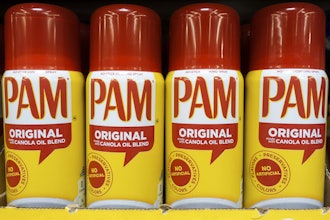
This column originally ran in the September 2013 issue of Food Manufacturing.
As consumer interest in gluten-free food products rises, food manufacturers have been cashing in. But until last month’s announcement by the FDA, the label had little actual meaning.
According to a July 2010 study published in Discovery’s Edge, Mayo Clinic’s online research magazine, diagnosed cases of celiac disease have risen four-fold in the past 60 years, though researchers are still seeking an explanation for the sudden spike in cases.
Celiac disease is an autoimmune disease in which the sufferer often experiences digestive complications when exposed to wheat protein, or gluten. As diagnosis of the disorder increases — and recent estimates suggest that approximately one percent of the population suffers from celiac disease — so does consumer interest in gluten-free products.
In addition to celiac disease, which can be quite severe, a number of other gluten sensitivity disorders exist along a spectrum of intensity, creating an even larger pool of consumers pursuing a gluten-free diet. Still others, spurred on by cardiologist William Davis’ recent book, Wheat Belly, which urges all consumers to shun wheat in favor of a gluten-free diet, have decided to shun gluten by choice.
While an optional gluten-free diet may be the next trendy diet fad (anybody remember South Beach?), real diagnosed cases of celiac disease and other gluten sensitivities show no evidence of slowing. And savvy food processors are reaping the benefits as U.S. consumers reportedly spend between $4 billion and $7 billion each year on gluten-free products.
Curiously, however, until recently the “gluten free” label meant very little.
Last month, after six years of deliberation, the FDA released guidance that would regulate products that carry a “gluten free” label. According to the new rules, these products can contain no more than 20 parts per million of gluten.
Food manufacturers now have one year to achieve compliance before the full weight of the regulation is enforceable.
Michael R. Taylor, the deputy FDA commissioner for foods and veterinary medicine, said, “This standard ‘gluten free’ definition will eliminate uncertainty about how food producers label their products and will assure people with celiac disease that foods labeled ‘gluten free’ meet a clear standard established and enforced by FDA.”
Predictably, response to the new regulations from advocacy groups representing those who suffer from celiac disease has been positive and supportive of the new guidance. Response from industry has been, thus far, largely absent.
Manufacturers should look at these new guidelines as a gift. While federal guidelines did not yet exist, truth-in-advertising is a well enshrined precedent. For example, North Carolina filed an injunction against Great Specialty Products in 2010 after the company was found to be selling bread containing gluten as “gluten free.” The owner of the company was later charged with six felonies for intentionally misleading consumers.
While this was an egregious case (the bread sold reportedly contained more than 5,000 parts per million of gluten), it illustrates that absent specific federal guidance, food processors were not left to make what they pleased and label it “gluten free” without consequence.
With these new proposed guidelines, processors will now be somewhat protected from liability as long as they operate within the established boundaries set by these rules.






















